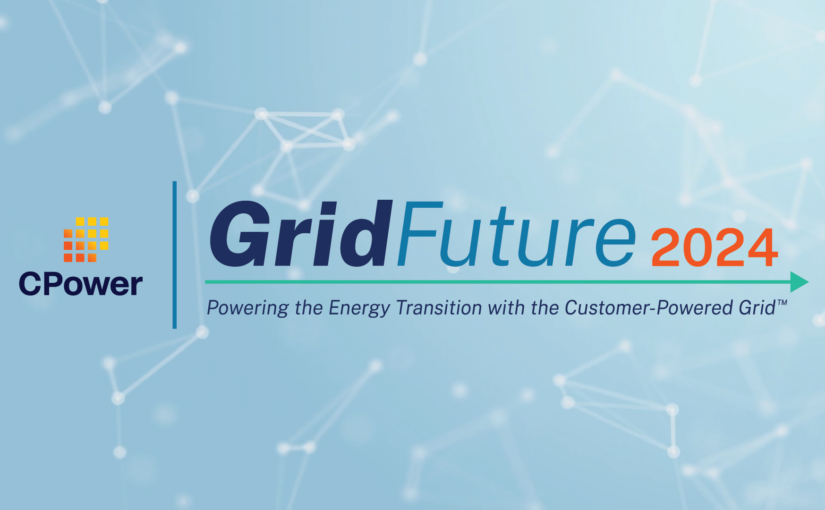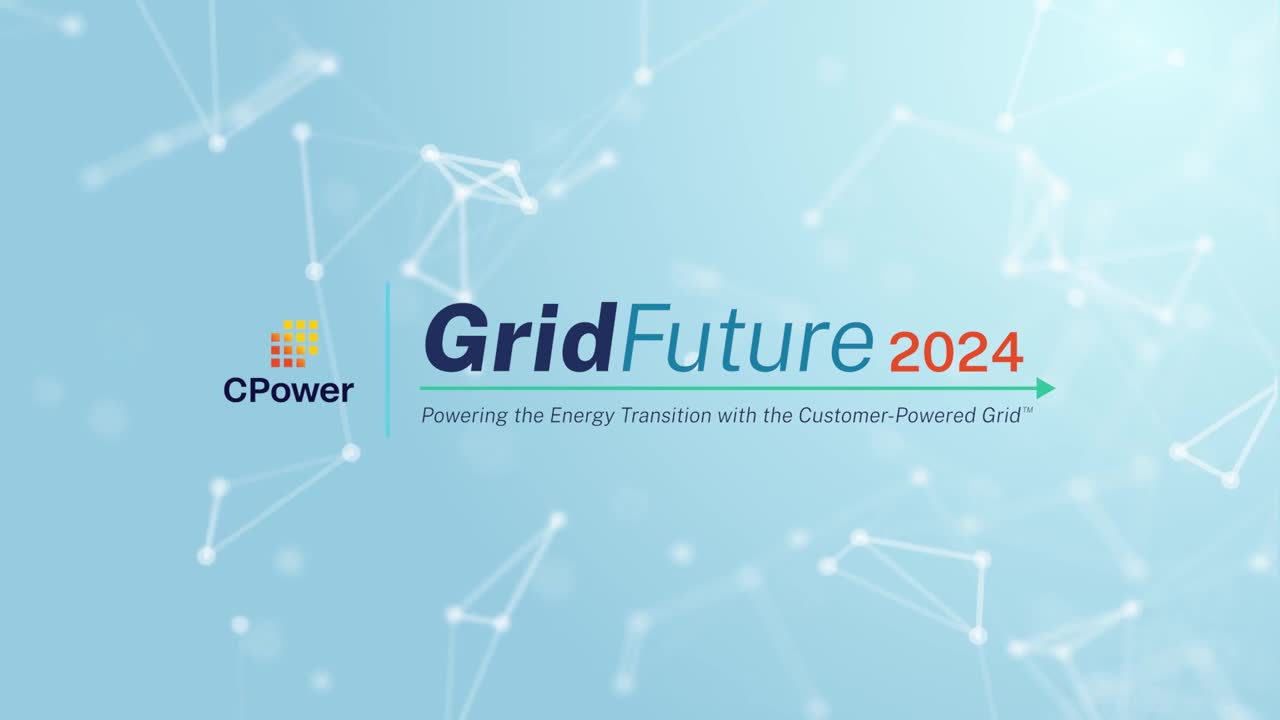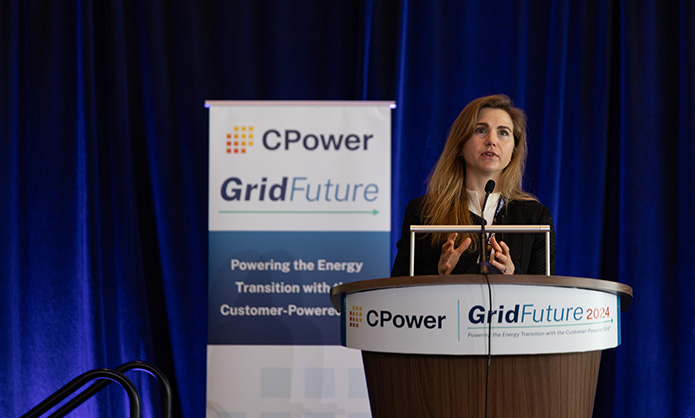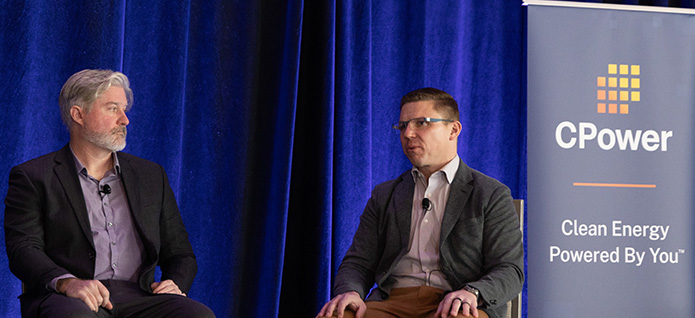VPPs: GridFuture Turns Knowledge into Action


Energy industry stakeholders recently convened at CPower’s GridFuture conference to pave the way for a better tomorrow for generations to come.
Path-blazing customers and partners, government officials and executives from companies accelerating the trajectory of the energy transition explored ways to create a clean, flexible and dependable energy future with distributed energy resources and virtual power plants.
“Our goal with this event is to serve as a catalyst for progress, fostering an environment where ideas converge, partnerships are forged and knowledge is turned into action. As far as the energy transition is concerned, collaboration will be the driving force behind success,” CPower CEO Michael Smith said in opening remarks at the MGM National Harbor just outside of Washington, D.C. on Jan 23.
GridFuture participants collaborated across a mix of meetings, panel discussions and presentations over two days. Here are three key takeaways.
1. The grid needs flexibility.
Merely responding to grid disruption is no longer sufficient because our existing grid infrastructure will not carry us into a clean energy future, warned a panel of industry CEOs.
The grid needs more flexibility to balance supply and demand as traditional “peaking” generators retire, renewable generation DERs increase, load from artificial intelligence technology soars, electrification expands and extreme weather events multiply.
Additionally, an estimated 1,250 GW of “unbuilt” clean energy is tied up in regulatory queues awaiting approval to be connected to the grid, which is an amount of capacity roughly equivalent to every generator currently in operation.
What’s more, when electricity demand on the grid is high, utilities and grid operators turn on peaker plants to meet demand. These centralized generators rely on large, remotely located power plants connected by transmission lines that may be susceptible to disruptions from extreme weather, cybersecurity and equipment issues. Therefore, they may not be available during peak times.
Ultimately, LS Power CEO Paul Segal said, “Our grid has become less reliable exactly when we need it to be more reliable than ever.”
2. VPPs provide grid flexibility.

Credit: Jon Armstrong
U.S. Department of Energy Loan Programs Office Engagement Officer Jen Downing discusses the future of VPPs.
In aggregating customer DERs and dispatching them together, VPPs offer fast, reliable and affordable ways to balance the grid. “[VPP] technology is a solution that is real today and that will redefine how we generate, distribute, and consume electricity. The benefits to energy users, our communities and our planet will only be more enhanced as we continue in scale,” Smith said.
Smith likened the potential of VPPs to the values of networks in telecommunications. According to Metcalfe’s Law, a network grows more valuable as its connections increase, Smith noted.
“The number of DERs that could be used in VPPs is projected to grow by 15 times over between now and 2035. This will create tremendous value and opportunity both for the grid and energy users,” Smith said.
Tripling current VPP scale by 2030 could address 10-20% of peak load nationally while saving $10 billion per year in grid spending, said Jen Downing, E at the U.S. Department of Energy (DOE) Loan Programs Office, who detailed the value and opportunity that VPPs presents in a keynote address at GridFuture.
Pulling from the DOE’s Pathways to Commercial Liftoff for Virtual Power Plants report, Downing explained how VPPs provide resource adequacy at a low cost while building, reducing emissions, alleviating transmission and distribution congestion and empowering communities.
3. Customers balance the grid through VPPs.

Credit: Jon Armstrong
Quinn Laudenslager of Energy Toolbase, left, and Metal Technolgies’ Nick Heiny shared examples of how their companies help the grid.
Large energy users with DERs enrolled in VPPs, such as commercial and industrial customers, know that they can help the grid by flexing their loads as needed.
“Flexibility can be minimally disruptive, like participating in a synchronized reserves program, or a major disruption like an emergency demand response event,” said Nick Heiny, vice president of Administration and General Counsel for Metal Technologies, an Indiana-based metal casting company with five foundries and two machining centers in the US and Mexico.
Heiny joined Quinn Laudenslager, vice president of Product for Energy Toolbase, for a CPower customer panel discussing what “flexibility” means on the demand-side and how energy users can use their flexible DERs to address resilience, reliability, sustainability or other business goals.
“There’s always a balance between operating and curtailment, and large energy users need to be mindful of their loads,” Heiny said. Thus, Metal Technologies uses CPower’s EnerWise® Site Optimization to maximize grid revenue and on-bill savings while minimizing disruptions.
“Flexibility also lowers our effective cost per kWh, which allows us to compete with overseas competitors that are adding significant amounts of inexpensive coal generation,” Heiny said.
The communities that surround Metal Technologies’ plants view the company as a good neighbor as well. Commercial and industrial energy users like Metal Technologies reduce carbon emissions when they curtail their loads, Heiny noted. Therefore, they can help their communities while benefiting financially.
Recognizing their contributions to decarbonization, grid flexibility and industry innovations, CPower honored Metal Technologies, Energy Toolbase and other customers and partners at its Customer-Powered Grid® Awards during GridFuture.
Check The Current again soon for more from the Customer-Powered Grid Awards and additional recaps and videos from GridFuture.
Join us on the journey to the Customer-Powered Grid—and the flexible, clean and dependable energy future that it will enable. Call us at 844-276-9371 or visit CPowerEnergy.com/contact to learn how we can help you most effectively invest in DERs and participate in VPPs to support sustainability, improve grid reliability and increase energy resiliency.
Glenn Bogarde
Since becoming CPower’s Senior Vice President of Sales, Marketing and Customer Experience, Glenn has led the company’s sales team on a nationwide mission to help customers get the most from their DER monetization participation. Glenn brings to CPower more than 20 years of sales experience in the enterprise software and energy industries.


